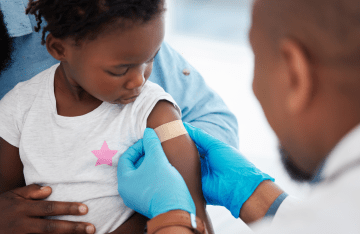The Media, Inequality, and Change Center Publishes “Informing Philadelphia: Strengths and Gaps in Local Media’s Coverage of Critical Information Needs”
The report highlights the strengths and shortcomings of local media in Philadelphia.

A new report from the Annenberg School for Communication at the University of Pennsylvania examines how well Philadelphia’s local media inform residents about the issues most vital to their daily lives.
The report, "Informing Philadelphia: Strengths and Gaps in Local Media’s Coverage of Critical Information Needs," from the Media, Inequality, and Change Center (MIC), was authored by Hendrik Theine, MIC’s post-doctoral researcher last year and now at the Institute for Comprehensive Analysis of the Economy (ICAE), and Carlotta Verita, a pre-doctoral researcher at ICAE.
Drawing on an analysis of more than 6,000 stories from 15 local outlets published in summer 2024, the study investigates topics that dominated coverage, how much reporting was truly local, and how ownership structures and media types influence editorial priorities.
“In a time of expanding news deserts and defunded public media, it’s vitally important that we assess whether our information needs are being well served by local media institutions,” says Victor Pickard, C. Edwin Baker Professor of Media Policy and Political Economy at the Annenberg School and co-director of the MIC Center. “Through rigorous, methodologically innovative, and deeply empirical research, Theine and Verita find that Philadelphia’s information needs are decidedly not being met. This is a crisis not only for local journalism, but for democratic society writ large.”
Key Findings Include:
- Limited local coverage: About 50% of analyzed news stories explicitly focus on Philadelphia-specific issues.
- Narrow thematic focus: News coverage is heavily concentrated on sports (18%), emergencies and public safety (14%), and arts, food, and entertainment (14%). By contrast, critical areas such as economic development, education, and transportation receive little attention. Local politics is almost entirely absent from front-page coverage.
- Ownership matters for media content: Privately owned outlets show the highest local focus (63%), often emphasizing sports and community events. In contrast, stock-listed outlets prioritize emergencies and crime (25%), often in sensationalist ways, with limited attention to root causes or systemic issues. Nonprofit and public outlets devote proportionally more coverage to health and civic information but remain under-resourced.
- Media type differences: Online-only outlets and daily newspapers provide the most local content, with online outlets especially focused on civic information. Local TV, in contrast, prioritized emergencies and crime.
- Structural incentives shape coverage: Topics like sports and crime dominate because they are easier to report, draw audiences quickly, and fit newsroom routines. In contrast, resource-intensive topics like education, health, or local governance require sustained reporting and attract less immediate engagement.
The authors warn that Philadelphia’s media ecosystem leaves significant gaps in coverage of issues essential to civic life and public well-being. Without policy interventions, new funding models for public-interest journalism, or innovative local media institutions, these gaps are likely to persist, particularly in underserved neighborhoods.
This research was made possible by a grant from the Independence Public Media Foundation.
About the MIC Center
Founded in collaboration between the University of Pennsylvania’s Annenberg School and Rutgers University’s School of Communication and Information, and now hosted primarily at Annenberg, the MIC Center explores the intersections between media, democracy, technology, policy, and social justice.



